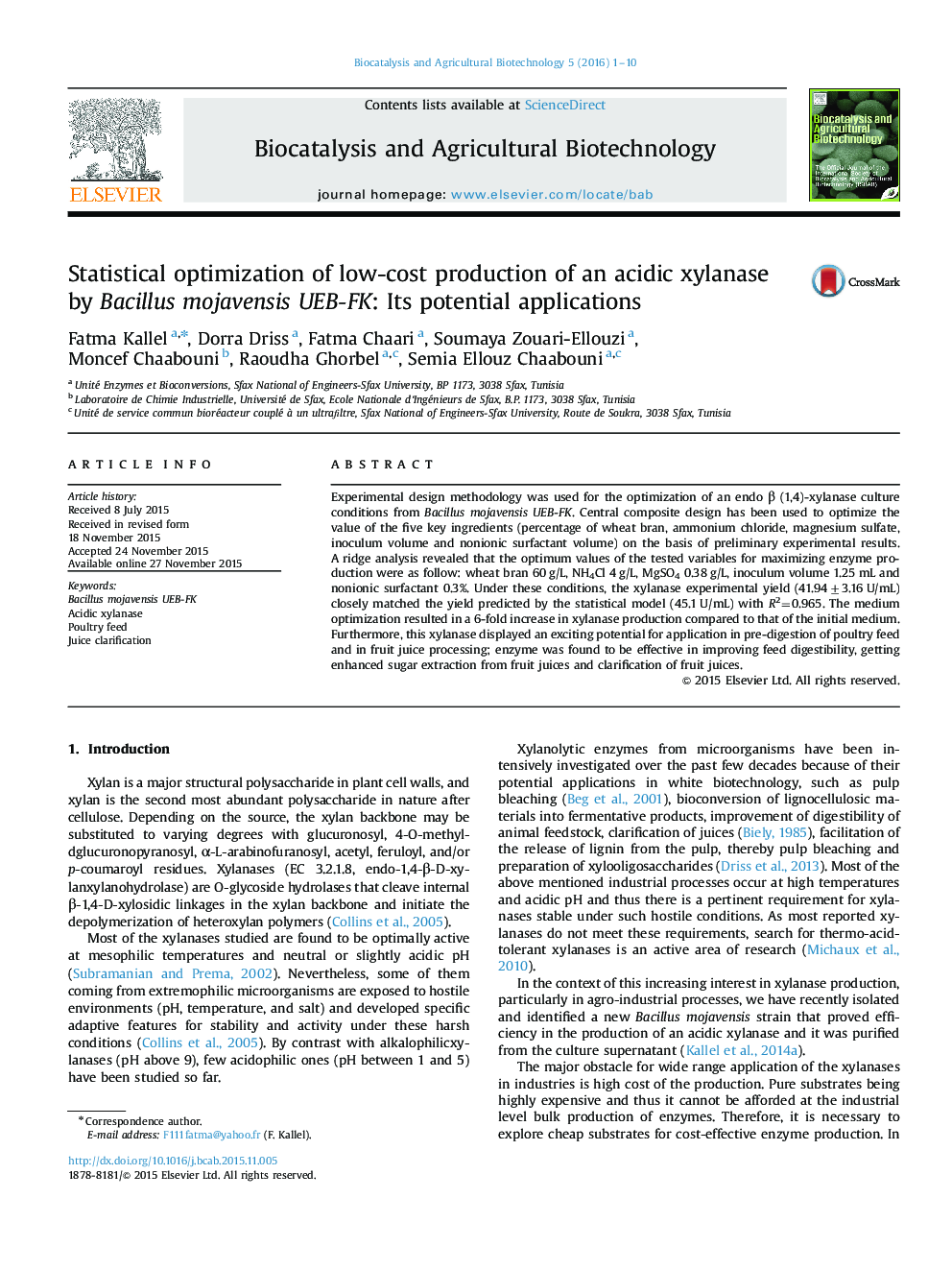| Article ID | Journal | Published Year | Pages | File Type |
|---|---|---|---|---|
| 2075347 | Biocatalysis and Agricultural Biotechnology | 2016 | 10 Pages |
Abstract
Experimental design methodology was used for the optimization of an endo β (1,4)-xylanase culture conditions from Bacillus mojavensis UEB-FK. Central composite design has been used to optimize the value of the five key ingredients (percentage of wheat bran, ammonium chloride, magnesium sulfate, inoculum volume and nonionic surfactant volume) on the basis of preliminary experimental results. A ridge analysis revealed that the optimum values of the tested variables for maximizing enzyme production were as follow: wheat bran 60 g/L, NH4Cl 4 g/L, MgSO4 0.38 g/L, inoculum volume 1.25 mL and nonionic surfactant 0.3%. Under these conditions, the xylanase experimental yield (41.94±3.16 U/mL) closely matched the yield predicted by the statistical model (45.1 U/mL) with R2=0.965. The medium optimization resulted in a 6-fold increase in xylanase production compared to that of the initial medium. Furthermore, this xylanase displayed an exciting potential for application in pre-digestion of poultry feed and in fruit juice processing; enzyme was found to be effective in improving feed digestibility, getting enhanced sugar extraction from fruit juices and clarification of fruit juices.
Keywords
Related Topics
Life Sciences
Agricultural and Biological Sciences
Agricultural and Biological Sciences (General)
Authors
Fatma Kallel, Dorra Driss, Fatma Chaari, Soumaya Zouari-Ellouzi, Moncef Chaabouni, Raoudha Ghorbel, Semia Ellouz Chaabouni,
